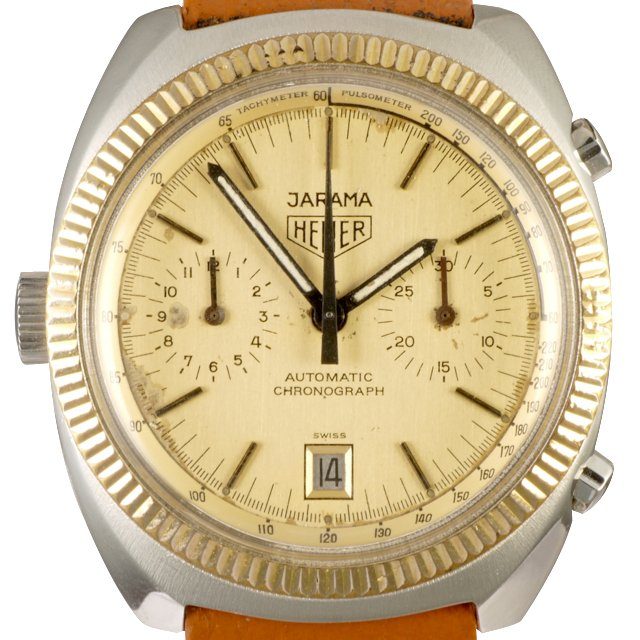
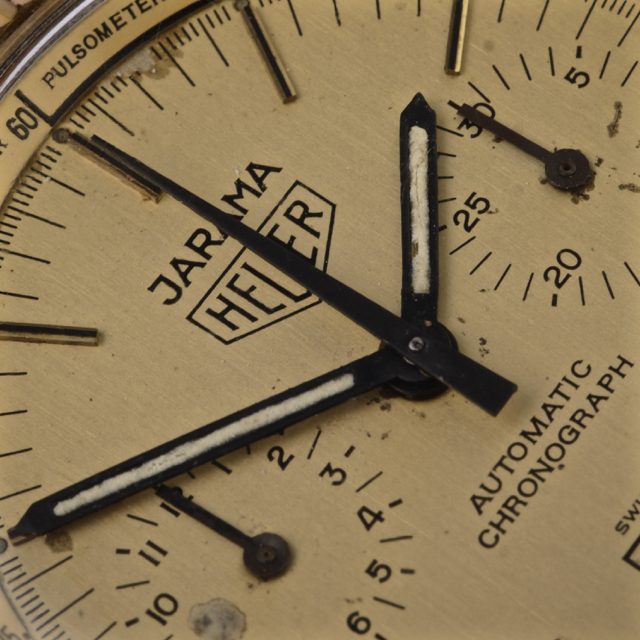
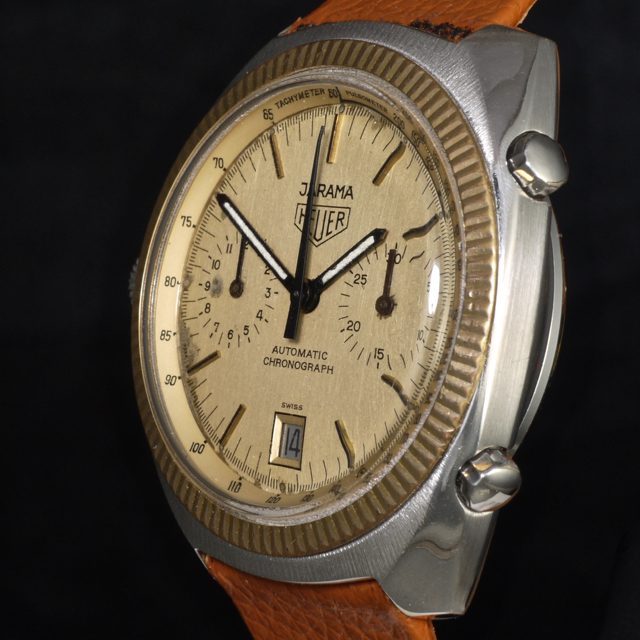
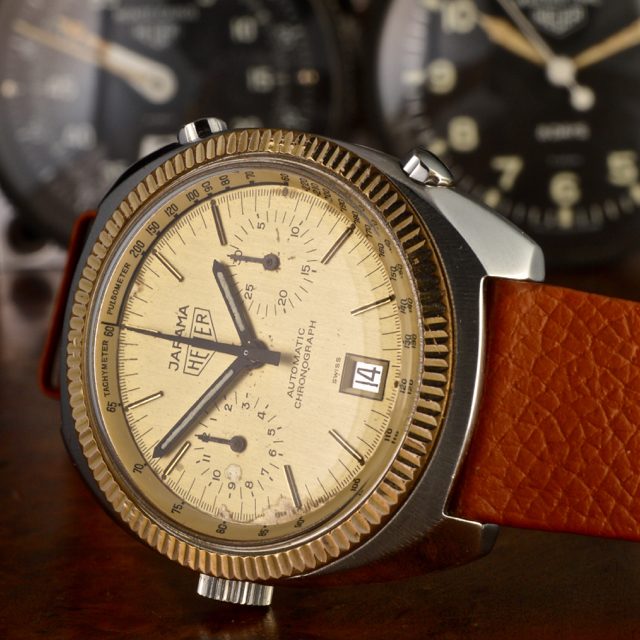
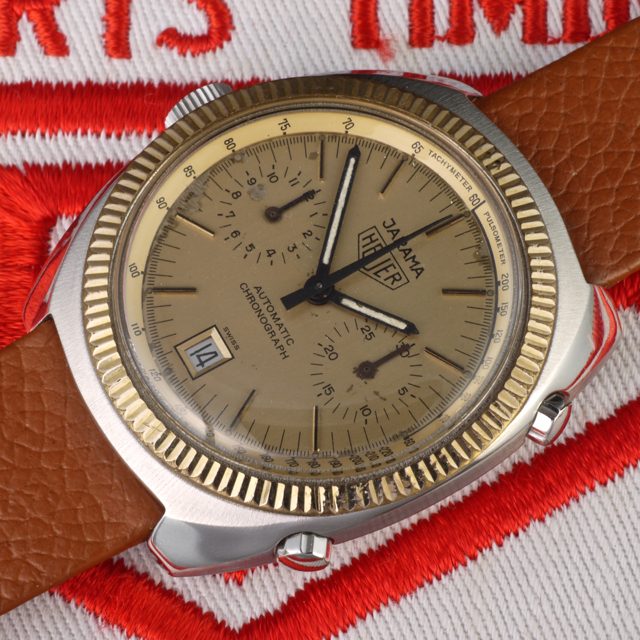
Heuer Jarama
Three Albuquerque, NM, men, Ben Abruzzo, Larry Newman, and Maxie Anderson, make the first successful transatlantic balloon flight in the helium-filled Double Eagle II1978 Heuer Jarama ref. 110.225 cal. 12. 42 X 38.8mm. case. This is a very rare Heuer, with a total production under 1.000 watches.
The Jarama chronograph was named for the Jarama Circuit, located 17 miles north of Madrid, Spain. The 2.11 mile circuit consists primarily of tight, twisty corners, and one relatively short straight, which always made overtaking extremely difficult. The track hosted its first Spanish Grand Prix in November 1967, a non-championship race won by Jim Clark in this Lotus 49. In May 1968, Graham Hill, also driving a Lotus 49, won the first Formula One championship race held at Jarama, a bittersweet victory after Clark’s death the previous month.
The movement is based on the Buren 1282 with micro-rotor and was not designed to attach a chronograph mechanism – this led to the crown at 9 o’clock. While the el Primero has survived until today, the expensive design made this movement a victim of the quartz boom. Consequently, the number of these watches with the crown on the wrong side is pretty low.
Origins of the Fluted Bezel:
While we think of the fluted bezel as a decorative element on today’s watches, it had its origins in the very first waterproof watches. Rolex reports that when the Rolex Oyster first appeared in 1926, the fluted bezel had a functional purpose: it served to screw the bezel into the case helping to ensure that the watch was waterproof. The fluting on the bezel was identical to the fluting on the case back, with the same tool being used to screw-down both the front bezel and the case-back.
It all started in 1860, with Edouard Heuer setting up a workshop in Bernese, a predominantly French-speaking area of Switzerland close to the French border, a small town even now with a population under 5000. However, it is no stranger to watch companies, having also been where Breitling was founded and having been home to Longines. Of course, those companies were artisan workshops producing small numbers of mostly silver-cased pocket watches.
In 1914 Heuer made the first wristwatch for men, they used pocket-watch movements and reflected demand for wristwatches that would only increase during the First World War and after.
1920 was the first time in 8 years that an Olympic Games had been held, following the cancellation of the 1916 Berlin events. Heuer had some prominence as a sports timing company by this point and was pleased to be selected as the official timer of the Antwerp games. This was subsequently extended to the 1924 games in Paris and 1928 in Amsterdam: this cemented the brand marriage between timing and sports.
For today’s collectors, the heyday for Heuer really began in the mid-1930s. I think that’s also probably true for many other brands. Heuer began making pilots chronographs in 35. These were used by Air Force pilots primarily, a lot of them in the German Air Force. For most Heuer collectors, these pilot chronographs from around 1935 are the first real survivors that regularly can be found in the market today.
In the 1960s and 1970s, no brand was more prominent in motorsports timing than Heuer.
